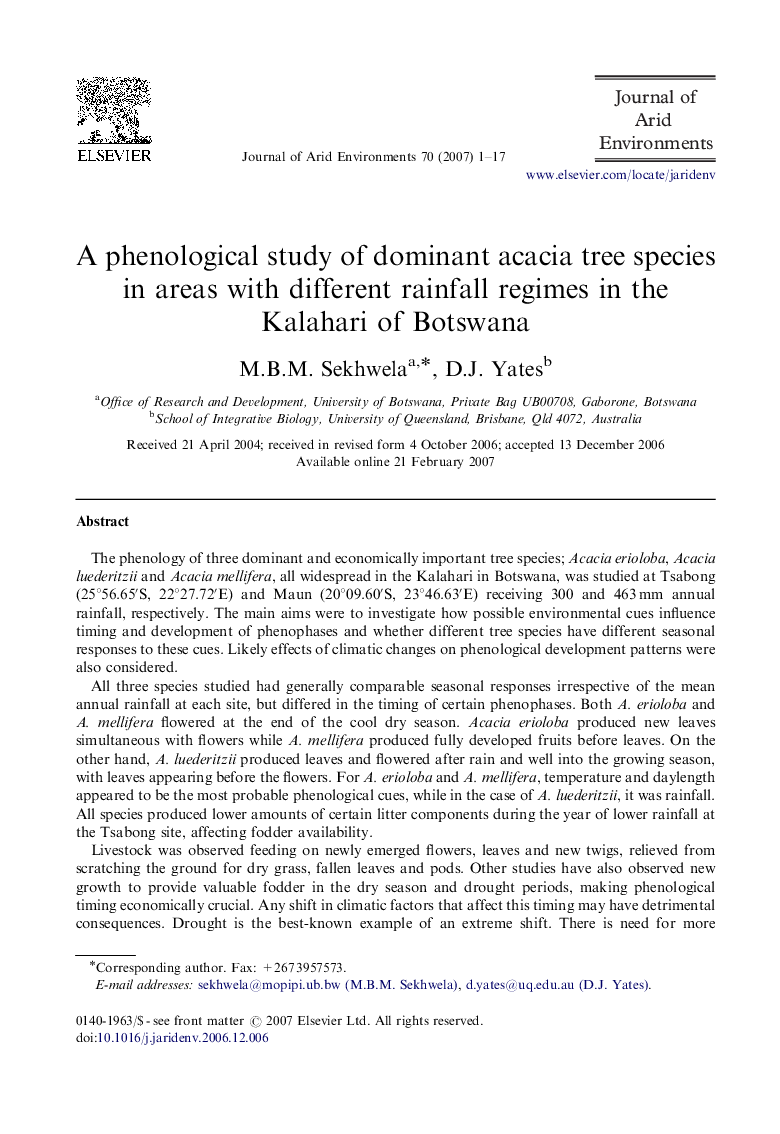| کد مقاله | کد نشریه | سال انتشار | مقاله انگلیسی | نسخه تمام متن |
|---|---|---|---|---|
| 4394589 | 1305546 | 2007 | 17 صفحه PDF | دانلود رایگان |

The phenology of three dominant and economically important tree species; Acacia erioloba, Acacia luederitzii and Acacia mellifera, all widespread in the Kalahari in Botswana, was studied at Tsabong (25°56.65′S, 22°27.72′E) and Maun (20°09.60′S, 23°46.63′E) receiving 300 and 463 mm annual rainfall, respectively. The main aims were to investigate how possible environmental cues influence timing and development of phenophases and whether different tree species have different seasonal responses to these cues. Likely effects of climatic changes on phenological development patterns were also considered.All three species studied had generally comparable seasonal responses irrespective of the mean annual rainfall at each site, but differed in the timing of certain phenophases. Both A. erioloba and A. mellifera flowered at the end of the cool dry season. Acacia erioloba produced new leaves simultaneous with flowers while A. mellifera produced fully developed fruits before leaves. On the other hand, A. luederitzii produced leaves and flowered after rain and well into the growing season, with leaves appearing before the flowers. For A. erioloba and A. mellifera, temperature and daylength appeared to be the most probable phenological cues, while in the case of A. luederitzii, it was rainfall. All species produced lower amounts of certain litter components during the year of lower rainfall at the Tsabong site, affecting fodder availability.Livestock was observed feeding on newly emerged flowers, leaves and new twigs, relieved from scratching the ground for dry grass, fallen leaves and pods. Other studies have also observed new growth to provide valuable fodder in the dry season and drought periods, making phenological timing economically crucial. Any shift in climatic factors that affect this timing may have detrimental consequences. Drought is the best-known example of an extreme shift. There is need for more information on the likely extent of other shifts and possible effects in vulnerable areas such as the Kalahari in the face of changing environmental and climatic conditions.
Journal: Journal of Arid Environments - Volume 70, Issue 1, July 2007, Pages 1–17